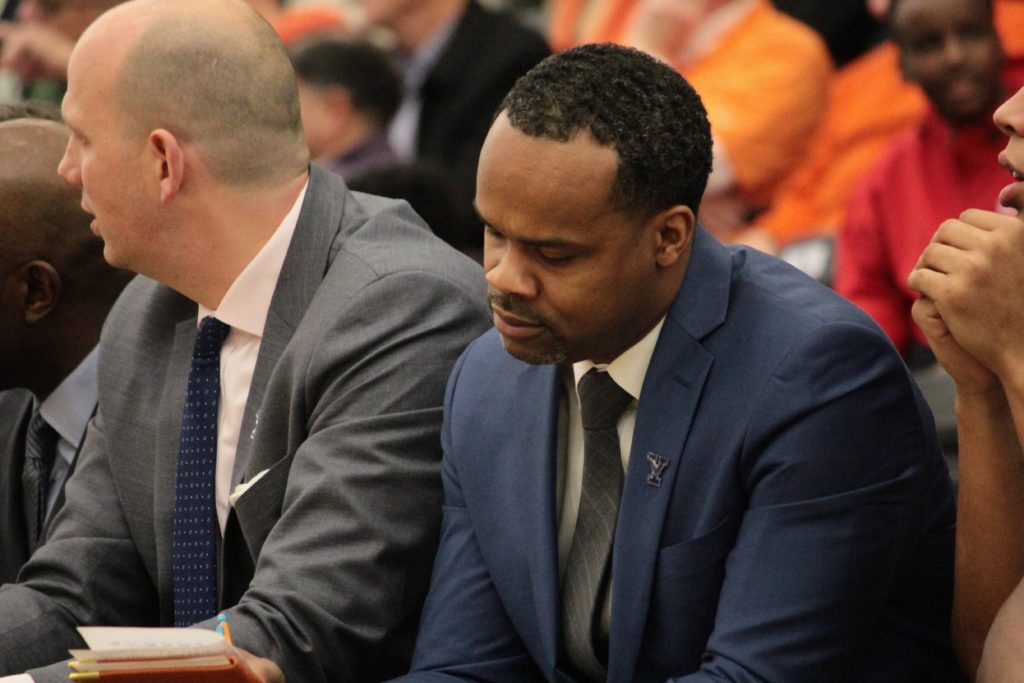AD Chun: Despite millions in lost revenue, Yale Athletics has not discussed cutting varsity teams
Leave a CommentIn an interview with the News on Nov. 17, Director of Athletics Vicky Chun said that despite lost revenue “in the millions” for Yale Athletics, the department has not discussed cutting any varsity teams.
The lack of normal spring and fall season revenue due to the COVID-19 pandemic has strained the financial resources of college athletic departments around the country. A Washington Post analysis published in October found that since the onset of the pandemic, around 80 NCAA Division I teams have been eliminated, upending the lives of around 1,500 student-athletes — a figure that does not include the countless other Division II and III programs that have also gone extinct.
Over the summer, Dartmouth cut five of their varsity sports teams after the Ivy League announced the cancellation of the fall sports season in early July. Brown reshuffled teams in a decision that ultimately eliminated six varsity programs in late May, though the move was not related to a COVID-19 budget deficit. Even Stanford, a larger department that extends athletic scholarships in the Pac-12 conference, cut 11 teams in July. But according to Chun, Yale Athletics has not considered similar measures.
“No that’s not my vision, it never has been,” Chun said, when asked if there had been discussion at Yale to cut varsity teams to save money. “You know, I’m sticking with my vision, and I appreciate Yale’s support that we want all our varsity teams to compete and to compete well within the Ivy League … And I do feel for my Ivy League colleagues, because, you know, an AD never goes into this profession to cut sports.”
Chun said she could not specifically quantify the amount of lost revenue “off the top of her head,” but noted that revenue from ticket sales, sponsorships and merchandising and Yale’s payout from the NCAA had all decreased.
She added that fundraising has been “terrific,” helping to make up for some of the lost revenue.
“Even though we haven’t asked our Yale Athletics family, alums have kind of all come together,” Chun said. “So if we were ever in a really tough spot, they have always come through.”
According to The Dartmouth, Dartmouth College president Phil Hanlon estimated that the elimination of five teams — men’s and women’s golf, men’s lightweight rowing, and men’s and women’s swimming and diving — along with the closure of the Dartmouth-operated Hanover Country Club and other administrative changes would save the school more than two million dollars. These changes were meant to help cover Dartmouth’s projected $150 million institutional budget deficit caused by the COVID-19 pandemic.

Earlier this year, Brown also dropped 11 varsity teams to club status and promoted club coed sailing and club women’s sailing to the varsity level, bringing down their total from 38 to 29 varsity teams. Since then, three of the 11 teams have been reinstated, partially because of criticism that the demotion of the Brown Bears’ men’s track, field and cross country teams would harm overall campus diversity.
“[In] the college sports [world], football makes money, [men’s] basketball makes some money, but it’s really dominated by those two, and in every other sport, [departments] lose money — from women’s basketball, track, baseball, volleyball, soccer, they all lose money,” Grant Son, a sports management professor at Columbia, said. “So you can now see what happens when colleges are receiving less revenue. If they tighten their belts on the expense side and they look on the margin, ‘well, where are some expenses we can cut?’ That’s where usually sports get added to that category.”
Even Stanford, which belongs to the Power 5 Pac-12 Division I conference, discontinued 11 varsity teams: men’s and women’s fencing, field hockey, lightweight rowing, men’s rowing, coed and women’s sailing, squash, artistic swimming, men’s volleyball and wrestling. Those 11 teams combined had won 20 national championships and 27 Olympic medals, but Stanford noted that “the financial model supporting 36 varsity sports is not sustainable” in its July open letter.
Yale’s Ivy League opponents Penn and Princeton both stated over the summer that they would not cut any of their varsity sports teams.
“I feel very fortunate to be a student-athlete at a school that values both academics and athletics,” women’s golfer Ami Gianchandani ’23 said. “Our sports represent years of hard work and dedication for our athletes, and I know our entire student-athlete community is grateful and appreciative of Yale’s thoughtful approach in these difficult times. It is evident especially now, that the leadership exhibited by our coaches and athletics staff is truly the best in the country.”
In the interview with the News, Chun said that the brief, six-day period the University spent in Phase II with sport-specific practice was like “Christmas morning” for her. On the other hand, she described the announcement to athletes that the winter sports season was canceled as “one of the hardest things [she has] ever had to do as athletic director.”
The Ivy League’s decision to cancel the winter sports season and postpone the spring season was a unanimous decision among the Ancient Eight presidents, according to Chun. She added that the official public announcement was released less than 24 hours after the decision had been made by the Council of Presidents.
“We did not want the idea of being cut to impact the quality of our training, so we never discussed the prospect, although I am sure many of us held it in the back of our minds,” fencer Allan Ding ’24 said. “We instead focused our energy towards supporting the cut teams at other schools. I have many close friends who work incredibly hard to become great at their sport, so it is always very disappointing to see another University take away their ability to compete for monetary reasons.”
Yale has 35 varsity teams.
Eugenio Garza García | eugenio.garzagarcia@yale.edu







